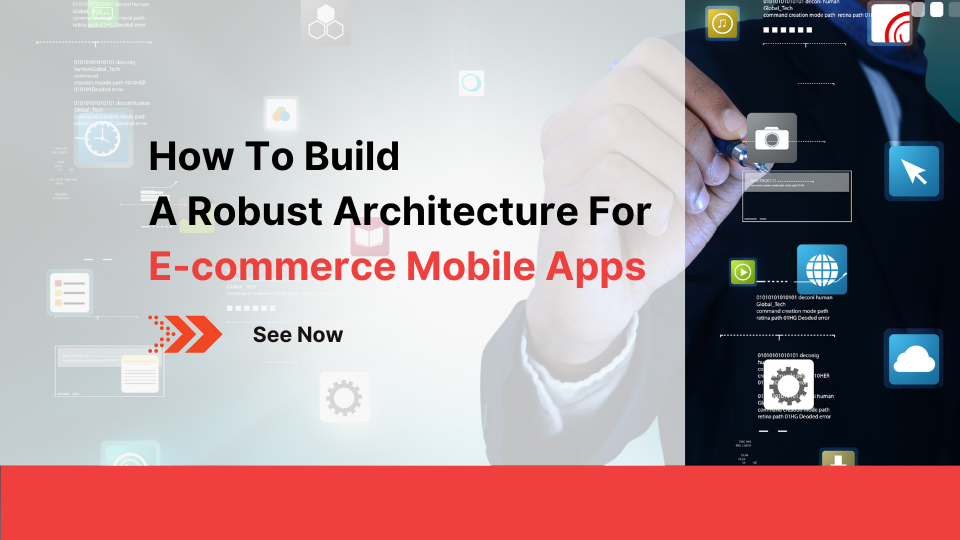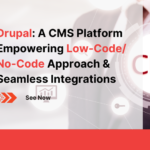E-commerce mobile apps have become an essential part of our daily lives. As more and more people turn almost exclusively to mobile devices for shopping, it has become crucial for businesses to create user-friendly, efficient and secured mobile apps. To achieve this, it is essential to have a robust architecture. A well-designed architecture not only improves the app user experience but also makes the overall system reliable, secure, and scalable. This paper will discuss the key factors to consider when designing a robust architecture for E-commerce mobile apps and how to choose the right architecture for your project.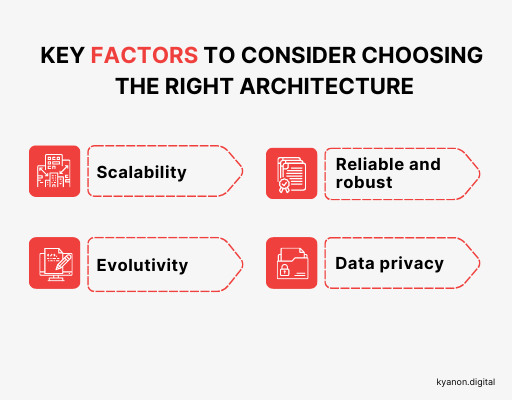




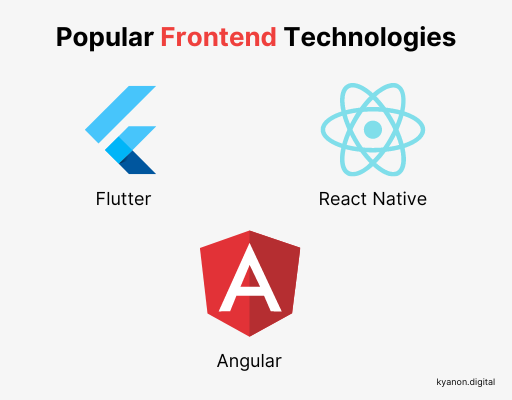 On top of these factors we will find the adoption rate in the labor force available, the learning curve of the technology, and community support. Also important is the impact of the development cost. Considerations such as the target platforms encompassed (iOS, Android, phone/tablet, Desktop and Web) is necessary and a balance between cost, time to market, maintenance, etc has to be taken into account.For instance, native development usually allows the app to be faster than hybrid mobile development but for business applications this difference in terms of performance is not really felt by the end-users. On the other hand, if the system must be accessible from multiple devices and platforms with a cost that is contained, hybrid development or cross platform development kits such as Flutter will be more interesting.In addition to the choice of the frontend technology, the emphasis must be put on a good user interface (UI) and user experience (UX). The UI and UX are critical for the success of an E-commerce platform. The UI/UX is the face of the platform and directly affects the user’s perception of the brand, which can impact their decision to make a purchase. The platform’s ease of use, navigation, speed, and aesthetics can all contribute to a positive or negative experience for the user. A well-designed UI/UX will lead to increased engagement, conversion rates, and customer loyalty. It is important to consider the customer’s journey and make it as smooth as possible. This involves designing the platform with a user-centric approach, understanding the user’s needs and behaviors, and testing and iterating to ensure the best possible experience. To achieve this a highly qualified team of designers is necessary as well as a good methodology, like A/B testing, to ensure the fit with the users to ultimately attract and retain customers.
On top of these factors we will find the adoption rate in the labor force available, the learning curve of the technology, and community support. Also important is the impact of the development cost. Considerations such as the target platforms encompassed (iOS, Android, phone/tablet, Desktop and Web) is necessary and a balance between cost, time to market, maintenance, etc has to be taken into account.For instance, native development usually allows the app to be faster than hybrid mobile development but for business applications this difference in terms of performance is not really felt by the end-users. On the other hand, if the system must be accessible from multiple devices and platforms with a cost that is contained, hybrid development or cross platform development kits such as Flutter will be more interesting.In addition to the choice of the frontend technology, the emphasis must be put on a good user interface (UI) and user experience (UX). The UI and UX are critical for the success of an E-commerce platform. The UI/UX is the face of the platform and directly affects the user’s perception of the brand, which can impact their decision to make a purchase. The platform’s ease of use, navigation, speed, and aesthetics can all contribute to a positive or negative experience for the user. A well-designed UI/UX will lead to increased engagement, conversion rates, and customer loyalty. It is important to consider the customer’s journey and make it as smooth as possible. This involves designing the platform with a user-centric approach, understanding the user’s needs and behaviors, and testing and iterating to ensure the best possible experience. To achieve this a highly qualified team of designers is necessary as well as a good methodology, like A/B testing, to ensure the fit with the users to ultimately attract and retain customers.




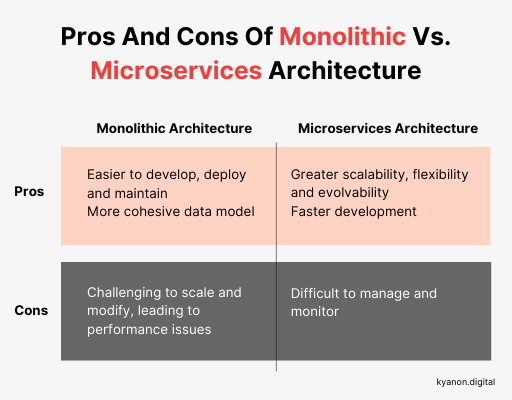
Table of contents
show
1. Key factors to consider

1.1. Scalability
Scalability is one of the critical factors for E-commerce infrastructure. The architecture should be designed in such a way that it can handle a large number of users and transactions simultaneously. The app should also be able to scale up or down depending on the demand in order to keep the operations costs in a given range. Scalability can be achieved by using microservices architecture, which allows for easy scaling of individual services for instance leveraging technologies such as Amazon Lambda, Amazon EKS or Azure Functions.
1.2. Evolutivity
Another important factor is evolutivity. E-commerce mobile apps are not static; they must evolve to meet the changing needs of the business and its customers, adding new services, new features is key. A robust architecture should allow for easy modification and expansion of the system. The data model in the E-commerce core backend should be extensible, and its architecture must be open for later migration. The system needs to be easy to extend for instance when adding connectors or extracting data for business intelligence, data visualization, payment solutions, ERP, and other third-parties systems.
1.3. Reliable and Robust
An E-commerce system must be reliable and robust. The architecture has to be designed to ensure that the services are available and functioning correctly at all times and in all regions. This can be achieved by using a monolithic or microservices architecture, depending on the size of the business and target audience. A robust architecture should also ensure that the app can handle errors and recover gracefully from failures ensuring no, or very little, data loss and down time.
1.4. Data Privacy
Data privacy is a critical concern for E-commerce platforms. The architecture should be designed to ensure that customer data is protected and secured at all times. The system must be compliant with legal requirements such as GDPR in Europe and other data protection regulations in accordance with the countries’ laws of the customers. The system should also use end-to-end encryption, secure authentication, and access control mechanisms to prevent unauthorized access to data.
2. Technical Architecture
2.1. Frontend Technologies
The frontend of an E-commerce mobile app is crucial in creating a user-friendly and efficient app. There are several popular frontend technologies available for mobile apps, such as Flutter, Angular, React Native, and others. Each technology has its pros and cons, and the choice of technology will depend on several factors. On top of these factors we will find the adoption rate in the labor force available, the learning curve of the technology, and community support. Also important is the impact of the development cost. Considerations such as the target platforms encompassed (iOS, Android, phone/tablet, Desktop and Web) is necessary and a balance between cost, time to market, maintenance, etc has to be taken into account.For instance, native development usually allows the app to be faster than hybrid mobile development but for business applications this difference in terms of performance is not really felt by the end-users. On the other hand, if the system must be accessible from multiple devices and platforms with a cost that is contained, hybrid development or cross platform development kits such as Flutter will be more interesting.In addition to the choice of the frontend technology, the emphasis must be put on a good user interface (UI) and user experience (UX). The UI and UX are critical for the success of an E-commerce platform. The UI/UX is the face of the platform and directly affects the user’s perception of the brand, which can impact their decision to make a purchase. The platform’s ease of use, navigation, speed, and aesthetics can all contribute to a positive or negative experience for the user. A well-designed UI/UX will lead to increased engagement, conversion rates, and customer loyalty. It is important to consider the customer’s journey and make it as smooth as possible. This involves designing the platform with a user-centric approach, understanding the user’s needs and behaviors, and testing and iterating to ensure the best possible experience. To achieve this a highly qualified team of designers is necessary as well as a good methodology, like A/B testing, to ensure the fit with the users to ultimately attract and retain customers.
On top of these factors we will find the adoption rate in the labor force available, the learning curve of the technology, and community support. Also important is the impact of the development cost. Considerations such as the target platforms encompassed (iOS, Android, phone/tablet, Desktop and Web) is necessary and a balance between cost, time to market, maintenance, etc has to be taken into account.For instance, native development usually allows the app to be faster than hybrid mobile development but for business applications this difference in terms of performance is not really felt by the end-users. On the other hand, if the system must be accessible from multiple devices and platforms with a cost that is contained, hybrid development or cross platform development kits such as Flutter will be more interesting.In addition to the choice of the frontend technology, the emphasis must be put on a good user interface (UI) and user experience (UX). The UI and UX are critical for the success of an E-commerce platform. The UI/UX is the face of the platform and directly affects the user’s perception of the brand, which can impact their decision to make a purchase. The platform’s ease of use, navigation, speed, and aesthetics can all contribute to a positive or negative experience for the user. A well-designed UI/UX will lead to increased engagement, conversion rates, and customer loyalty. It is important to consider the customer’s journey and make it as smooth as possible. This involves designing the platform with a user-centric approach, understanding the user’s needs and behaviors, and testing and iterating to ensure the best possible experience. To achieve this a highly qualified team of designers is necessary as well as a good methodology, like A/B testing, to ensure the fit with the users to ultimately attract and retain customers.
2.2. Backend Architecture
The backend architecture of an E-commerce mobile app is critical for its efficient functioning. It starts by finding the right core platform and there are several E-commerce platforms available in the market, open-sources, Saas, etc. As mentioned previously, in addition to some key factors regarding the core platform that we will detail later, the overall architecture must be designed to ensure that the system is scalable, reliable, and secure.The E-commerce platform is usually connected to various external systems. First to the ERP system to manage inventory, orders, and shipments. The platform should be able to communicate with the ERP system to get real-time updates on inventory levels and order status. The platform is also connected to sellers and partners, who may have their own backend systems or want to use your own backend system in a multi-tenant mode. The platform should be able to communicate with these external systems to get real-time updates on product availability and pricing and to allow your partners to integrate seamlessly with the mobile app.In addition, the payment solution is an essential part of the E-commerce platform. Customers expect to have the choice between several solutions, and the integration once again must be seamless, easy, secure and reliable to process payments and manage refunds.Finally, the E-commerce platform must be optimized for performance and reliability. This includes caching, load balancing, content delivery networks, and monitoring. These optimizations help improve the user experience, reduce latency, and prevent downtime.
2.3. Finding the Right Core Platform
When selecting the core E-commerce, it is essential to consider your business size and target audience. A large business with a significant customer base would need a core platform that is scalable and can handle a high volume of traffic. On the other hand, a small business with a smaller customer base can opt for a less scalable but more cost-effective option.Several notable solutions exist with different options for the infrastructure: Saas, self-managed cloud or on-premise as well as in terms of licensing: open source or commercial ones.In addition to the elements mentioned above like the connectivity to other systems, the performance of the software and the security, some other key points have to be considered.First, the underlying data model needs to be open, extensible and flexible for easy customization and later migration to other core platforms.Second, the ecosystem for plugins and extensions available has to be wide enough to cover your needs and limit custom development.Lastly, the support and maintenance costs have to be evaluated. In this evaluation the size of the community, the development language and the entity maintaining the product are the main factors.
2.3. SaaS Support or Self-Managed
The choice between SaaS support or self-managed (on premise or on cloud) depends on the business’s size, budget, and technical expertise. SaaS support is an excellent option for small businesses that don’t have the resources to maintain their backend infrastructure. Self-managed is ideal for larger businesses with a dedicated IT team that can manage, maintain and tune the infrastructure.
2.4. Monolithic vs. Microservices Architecture
When building an E-commerce mobile app’s backend architecture, there are two main options to implement the features not part of the core E-commerce platform: a monolithic or microservices architecture. A monolithic architecture consists of a single application with all the functionality embedded within it. On the other hand, a microservices architecture breaks down the application into smaller, independent services and data domains.
3. Monolithic vs. Microservices Architecture: Pros and cons
Monolithic architecture is easier to develop, deploy, and maintain. It also allows for a more cohesive data model, making it easier to manage data. However, as the application grows, it can become challenging to scale and modify, leading to performance issues.In contrast, a microservices architecture is more complex to design, develop, deploy, and maintain. However, it offers greater scalability, flexibility, and evolvability. Microservices architecture allows for faster development and deployment of new features, and the individual services can be scaled independently. However, it requires a robust infrastructure to handle the multiple services, and it can be difficult to manage and monitor. Also it requires a good isolation and definition of the different data domains and of the services orchestration.
4. How to choose the right architecture?
The decision to choose a monolithic or microservices architecture depends on the business’s size, budget, and target audience. A monolithic architecture is ideal for smaller businesses with a limited budget and technical expertise. It allows for easier development, deployment, and maintenance. A microservices architecture is ideal for larger businesses with a more significant customer base and technical expertise. It offers greater scalability, flexibility, and evolvability.One strategy to consider is starting monolithic but with a modular architecture that can evolve domain by domain to a microservices architecture, we then speak about modulith. This approach allows for a flexible and adaptable architecture that can adapt to changes in the business environment.It is also essential to consider data architecture when building an E-commerce mobile app’s backend. It requires a suitable Data Governance strategy to achieve efficient definitions of the Data Domains.Note as well that the architecture must take into account the regulations requirements of each country in which the business operates. For instance, local laws can require the data of the users to be stored in their country.To know more about how to optimize your E-commerce platform, download the white paper below5. Conclusion
Kyanon Digital is a Vietnam-based tech powerhouse, we build secure and reliable mobile apps that focus on offering a seamless experience to your customers which includes iOS/Android Custom App Development, E-commerce Mobile App, Customer Loyalty Apps and Maintenance & Post-warranty Support. With over 10+ years of experience of software development and being one of the Market Leaders in mobile app development in Vietnam, we always strive to provide world-class digital solutions using Agile processes. Talk to our experts if you have a project in mind!
5/5 - (22 votes)
